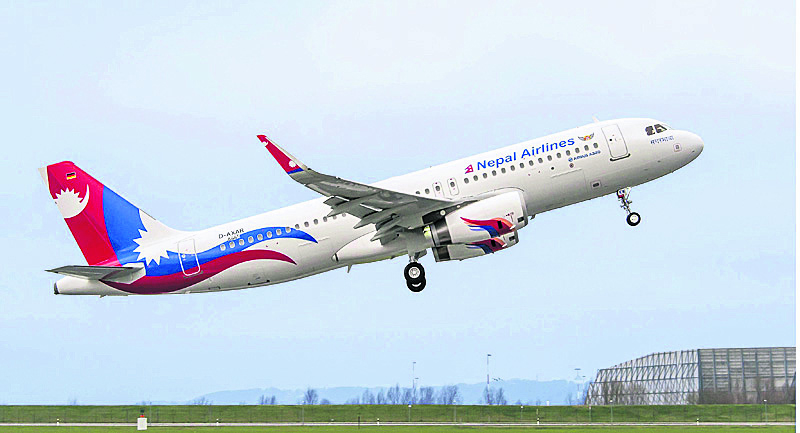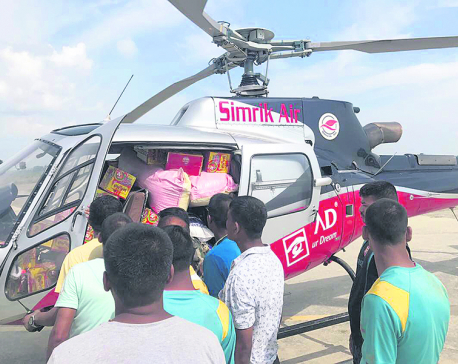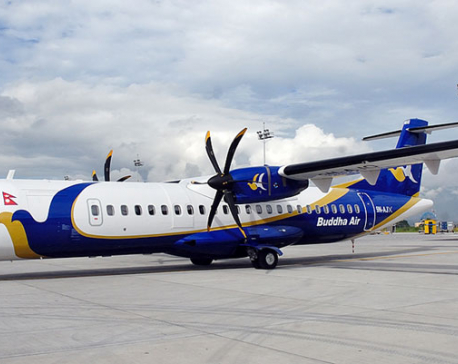
OR

One newspaper reported that the national flag carrier had “beaten” other airlines to become number one
We cannot do without measurements of some kind while carrying out our daily chores. Measurements can be linear, volumetric, quantitative, those related to weights and many more. But comparing “quality” is not as simple. Linear measures can be under FPS (foot/pound/ second) or MKS (meter/kilogram/second) systems. A mile, as a unit for distance, falls under the former and can be either “status mile” (common mile) or nautical mile (nm). The nautical mile is a complex concept as angular geometry is involved.
A line on the earth’s surface that sustains 1 minute angle (1 minute is one-sixtieth of a degree) at the centre of the earth is taken as 1nm! It was a convenient measure for maritime navigation. It was later adopted by the aviation sector as well. As regards orientation, clockwise deviation from the North meridian is termed as whole circle bearing (WCB). The nautical mile and WBC together form the basis of modern-day navigation. But this write up hovers over aviation-related measurements.
At the upper scale, astronomers could not do with tiny earthly units. For the solar system the mean distance between Sun and the Earth was assumed as 1 Astronomical Unit (AU) and it became the standard unit. But even this becomes wholly inadequate for inter-galactic spaces. As a result a new unit named “light year” came into being. The closest star in our neighbourhood, not counting our own Sun, is merely four light years away!
Moving on, surprisingly, aircraft fuelling is not measured in terms of volume but in weight. Since everything that goes into an aircraft is measured in pounds the fuel could not be measured in another unit. It made sense as engine power has been expressed in terms of “thousands of pounds of thrust” from a time before the popularity of the metric system. That is not all. Every passenger, even if he or she is not weighed individually, is actually accounted for. As per the norm in Nepal, a male westerner is taken to weigh 75kg (against 92kg in UK), an Asian male to weight 70kg and all females to weight 65kg (74kg in UK). The apparent disparity vis-à-vis British norms look rather strange.
As regards velocity, the measure is “knots” (nautical mile per hour). If an aircraft is at “10 knots at 270 degrees”, it means the wind is blowing from the west. The information helps aircraft to make necessary adjustments while landing in relation to runway. Head winds are considered favourable for both takeoffs and landings. Strong sideways wind tends to push aircraft off the runway centreline. If the wind was gushing at, say, 40 knots, it would mean that while normal wind was still the same, it occasionally gushes at 40 knots. This would make landing doubly tricky given the unstable nature of wind. It can even result in aircraft preferring to delay landing.
As for runways numbering, their ends are numbered between 01 and 36. The last figure is an unseen zero and is omitted. Runway ‘01’ actually means 010 degrees in WCB. The other end of RWY 01 cannot be anything but “19”, since we need to add 180 degrees to 010. Runway at TIA is numbered 02/20 while Gauchar had orientation of 16/34.
As regards comparison, the basic premise is that all those being compared need to be measured with the same yardstick. Obviously, the yard is implied in a literary sense here. No comparison is possible without this condition; nautical mile and status mile are, for that reason, not comparable. But it becomes easier with both converted to feet, the common denominator. But since 1nm is 6,080ft with a status mile is 5280ft, one can right away deduce that a nautical mile is 800ft longer than a mile.
Then there was a recent case of aviation-related data that the media erroneously reported about in order to put a positive spin around our own Nepal Airlines. One newspaper reported that the national flag carrier had “beaten” other airlines to become number one in terms of passengers carried to and from Kathmandu. Sorry to pour cold water on this misplaced patriotism, but this was a clear case of comparing apples and oranges. All nine airlines with which RA was compared have much wider international networks and it would be highly fanciful to think that our national flag carrier could beat them in any real sense.
The report could have simply said that passenger number of RA increased after the introduction of two A320s. And for how long do we need to continue to see the A320s as “new”? Further, there was no reason for RA’s CEO, of all people, to take pride in such hawa news and tweet the story as if it was a big achievement or “a befitting reply to all naysayers”! What anyone actually said or did not say was in any case immaterial as, after all, it was a grossly erroneous comparison.
harjyal@yahoo.com
You May Like This

Simrik Air conducts rescue and relief flights
Simrik Air Helicopter continued relief flights on Tuesday with Pilot in Command Captain Ananda Thapa. ... Read More...

Buddha Air brings in new aircraft, commercial flights from March 1
KATHMANDU, Feb 7: Buddha Air, the country’s leading private sector airline, has added a new aircraft to its fleet. ... Read More...

Air service obstructed in Bhojpur
BHOJPUR, Sept 13: Air service has been disrupted in Bhojpur district for the past one week due to unfavorable weather... Read More...




Just In
- Sunkoshi-Marin Diversion Project’s tunnel construction nears completion, breakthrough scheduled for May 8
- Govt tightens security arrangement for Third Investment Summit 2024
- Pesticide residue found in vegetables in Nepalgunj
- Aam Janata Party and Samajwadi Jana Ekata Party merge
- 1,600 participants confirmed for Nepal Investment Summit
- Ilam-2 by-elections held peacefully, vote count likely to start tonight
- NEA schedules five-day power cut across Kathmandu Valley for underground cable installation
- Hundreds of passengers including foreign tourists in distress as poor visibility halts flights to and from PRIA








-1200x560-wm_20240427144118.jpg)





Leave A Comment